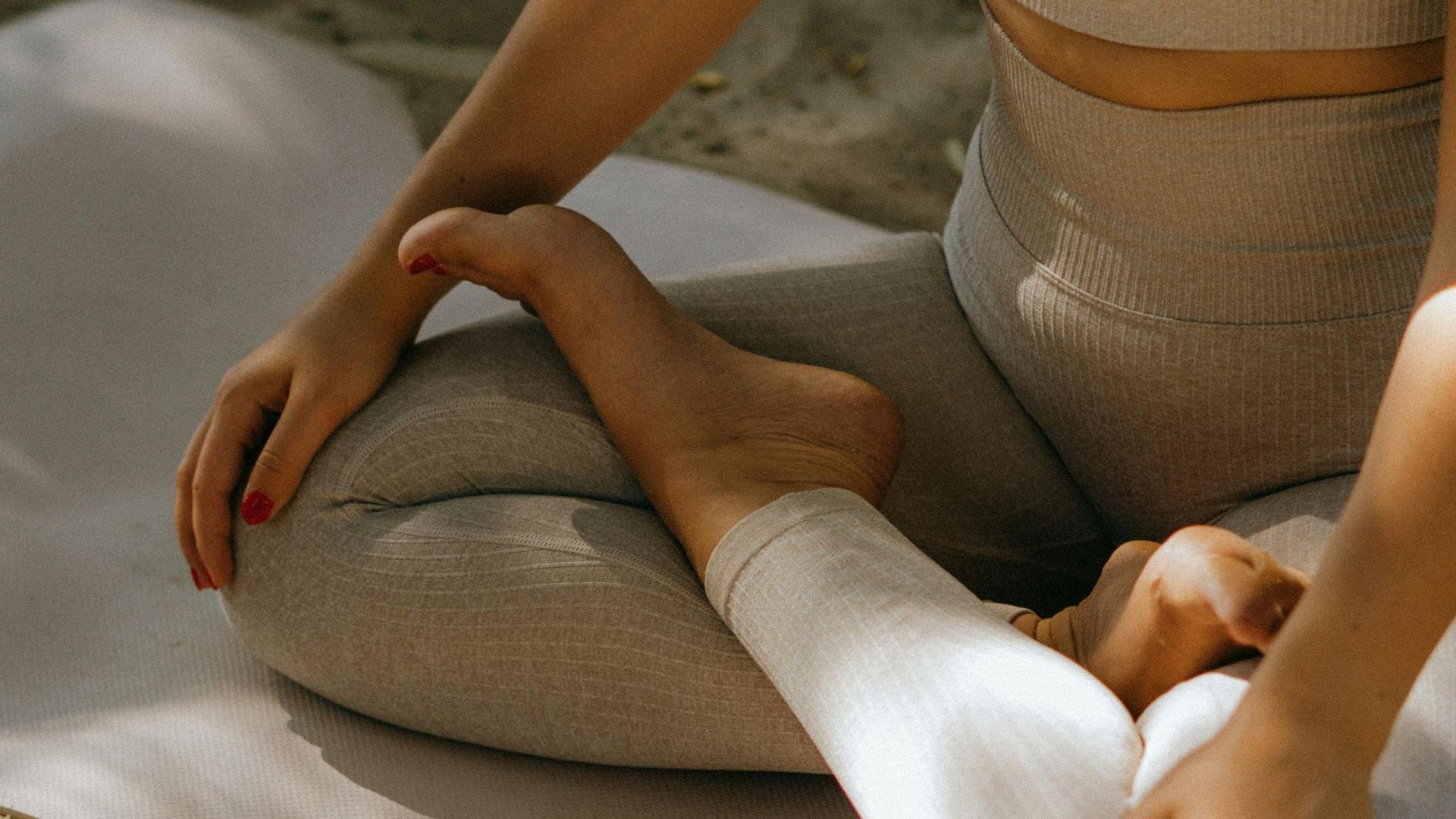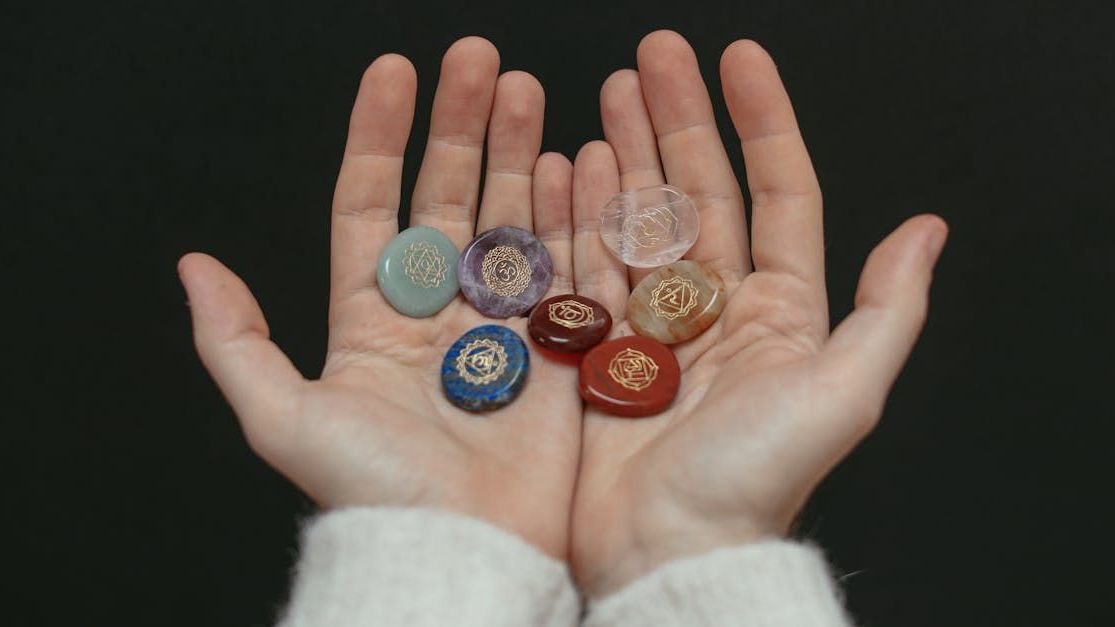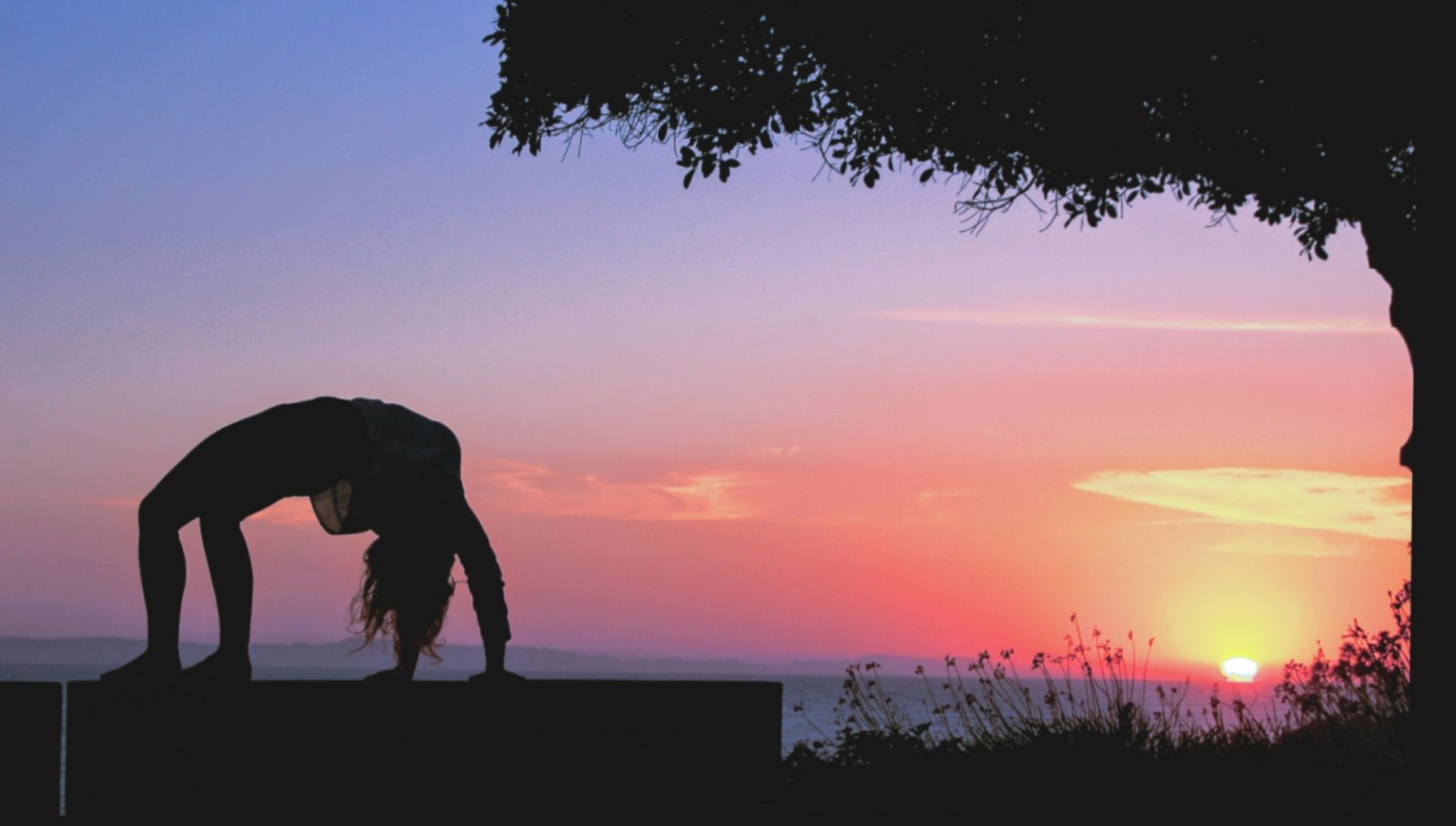



Welcome to my wellness blog.
Follow along with me as I share the discoveries I've made on my own wellness journey.

By Liz Campbell
•
July 8, 2024
Breathwork exercises are powerful tools that can help us navigate stress, anxiety, and even physical discomfort when utilized properly. They offer a way to ground ourselves, return to the present moment, and feel at peace. I've included a few different breathwork techniques below that you can try, experiment with each of these to see which one resonates best with you.
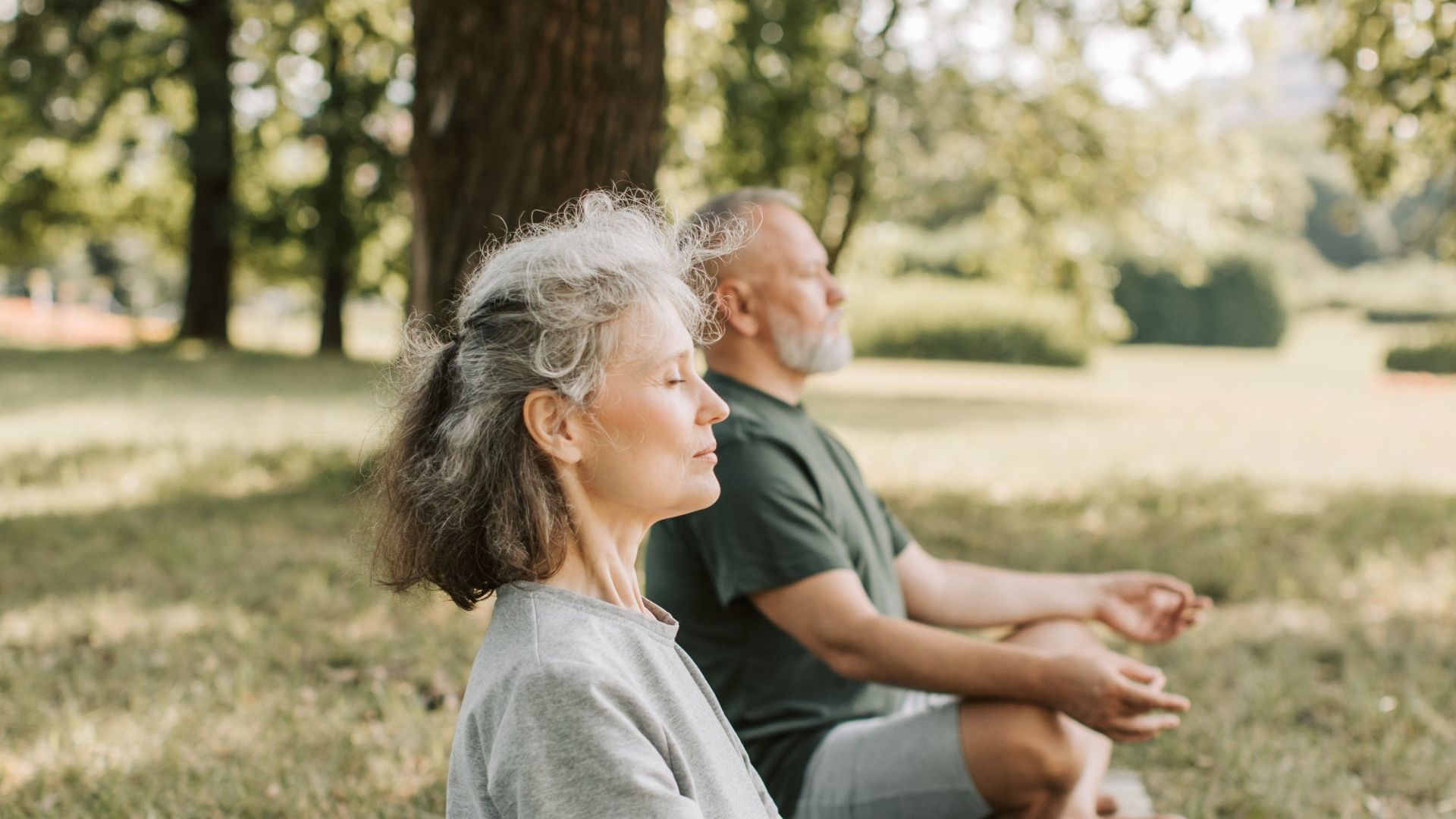
By Liz Campbell
•
June 7, 2024
What comes to mind when you think of a yoga class? Is it students practicing yoga poses like Warrior Two, Triangle, or Downdog, or does it also include meditation? It’s common for Western yoga classes to emphasize and glorify things like aesthetics, range of motion, and physical strength, while giving little attention to meditation. Because of this, people generally see yoga and meditation as separate disciplines. Meditation is actually part of yoga, one of its eight limbs, and our Western idea of yoga is actually mostly asana (yoga postures). Meditation and asana are two spokes on the same yoga wheel, deeply interconnected and integral to one another. This post goes over the symbiotic relationship between asana and meditation, and how to unlock the transformative power they hold when they’re practiced together. Whether you’re new to yoga or looking to go a little deeper in your sādhana (practice), understanding and integrating these elements can greatly enhance your personal growth and self-discovery. Yoga is the practice of connecting the mind to the body, breath to movement, and ourselves to our true nature, or any higher power we believe in. The practice of asana that most of us consider to be “yoga” has taken center stage mostly because of its health benefits and impressive postures. Working to achieve these postures is all well and good, however when you add a more mindful spin on your practice, it can transform your yoga class from a series of physical movements into a profound, multidimensional experience. Incorporating meditation into your sādhana deepens the mind-body connection, improves concentration and focus, heightens sensory awareness, adds spiritual depth and increases relaxation and overall well-being. In addition to all of the cognitive benefits of meditation, it also does a great job of improving your asana practice by strengthening your mental awareness of your pose alignment, helping make each movement more intentional, effective, and safe. I didn’t know this until I attended my first yoga teacher training, but the original purpose of practicing asana is to build physical strength, flexibility, and balance, making it possible to sit comfortably for extended periods of time. It is intended to work alongside all of the other limbs of yoga, and not necessarily be the one and only focus. In ancient texts like the Yoga Sutras, asana is mentioned as one of the eight limbs of yoga, where it serves the function of creating a stable and comfortable seat ( sthira sukham asanam ) for meditation. And that this physical preparation is essential to achieve the primary goal of yoga — spiritual growth and self-realization. Embracing the interconnectedness of meditation and asana opens doors to a richer, more profound yoga practice. By weaving mindfulness into your physical movements, we unlock the transformative power of yoga, nurturing not only your body, but also your mind and spirit. Read on to discover ways that you can deepen your mental and spiritual engagement of your asana practice by integrating meditation. 4 Ways to Integrate Meditation into Asana Practice

By Liz Campbell
•
May 31, 2024
I was only nineteen when a friend dragged me to my first yoga class in Laguna Beach, but I didn’t truly fall in love with the practice until three years later, when I discovered Vinyasa. I loved the variety of poses, or asanas, that were taught, the way they flowed so beautifully together, and I mostly loved how the practice made me feel. I initially started going to yoga because of all the superficial desires that many of us have, like wanting to be stronger, more flexible, healthier, etc. As expected, I began noticing gradual changes in my body, as well as a multitude of other positive effects after a relatively short amount of time. Looking back, I was so excited to discover this new obsession, however, I was completely unaware of how deep this whole yoga thing was about to take me. After just a couple months of maintaining a consistent yoga practice, my physical body was feeling strong and limber, but something else happened that I didn’t expect. My mind became more peaceful and present throughout the day, even during events that would have normally caused me to stress out. I began to grow more patience, contentment, and even a greater tolerance to life-stuff. Experiencing all these positive effects not only deepened my curiosity about the practice but also drove me to become a teacher. When I attended my first yoga teacher training at twenty five, I got a taste of exactly how much more there was to yoga than just contorting your body into multiple shapes. I learned detailed posture alignment, how to regulate the energy throughout my body, and that there were seven other limbs of yoga besides asana. Finding out that yoga was so much more than the poses was a wonderful realization that opened my eyes to the world of the subtle body and the idea that we can truly shape our own reality, one present moment at a time. The following year, I decided to take my education to the next level and attend my second yoga teacher training in Bali. At the time, I thought it would be similar to my first training experience, but it ended up being the most intense five weeks of my life. We spent countless hours studying, practicing asana, and meditating with nothing but the sound of birds, dogs, and the occasional motorbike. This all took place in a beautiful upper-level bungalow in the middle of the rice fields, with the most breath-taking 360 degree view. My last week of training was the most mentally and physically grueling, spent entirely in silence, and sitting in meditation seven hours a day, which we had been preparing for over the prior weeks.
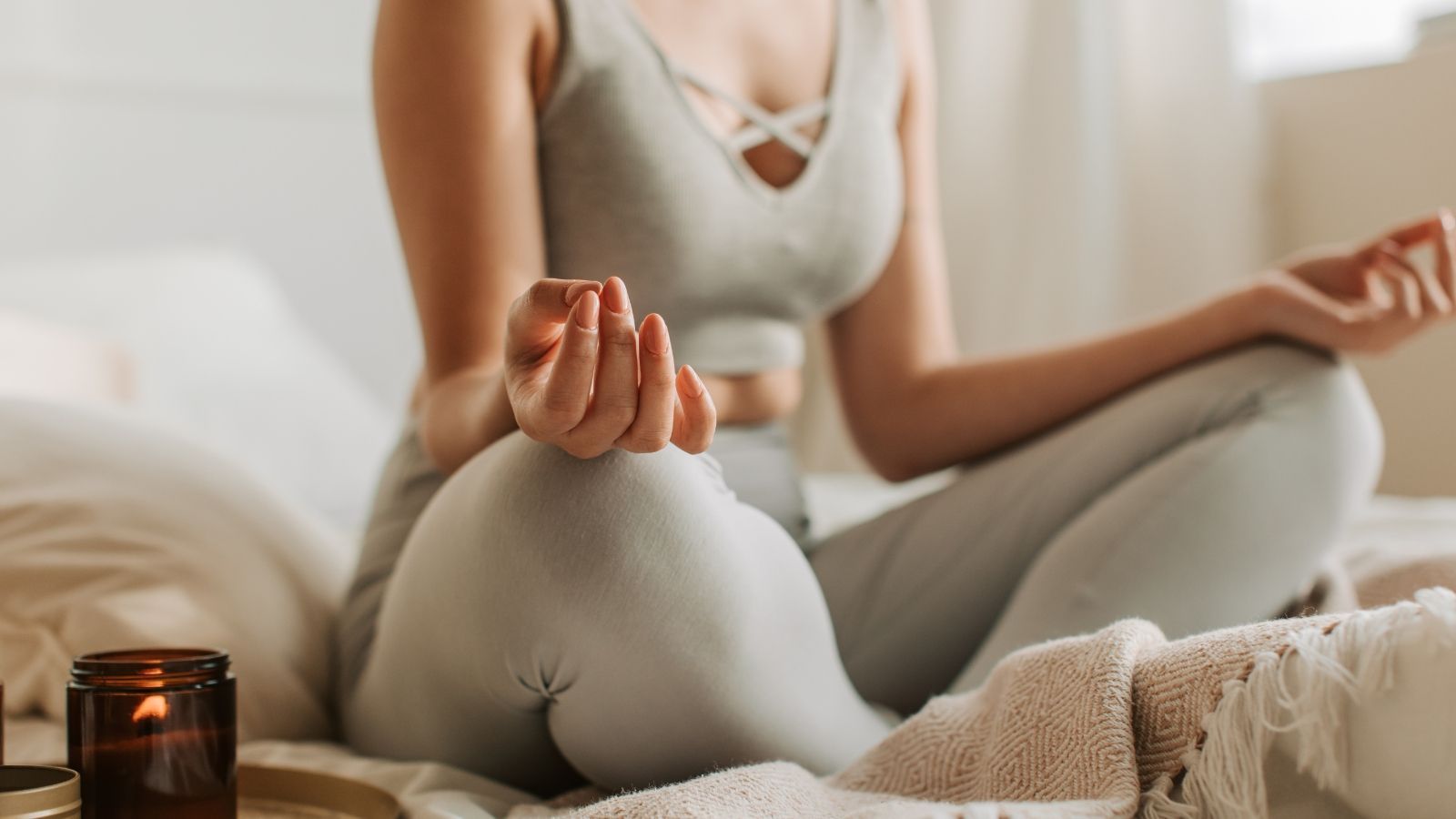
By Liz Campbell
•
May 29, 2024
In our busy lives, it's easy to get caught up in the hustle and forget the simplest, yet most crucial aspect of our well-being, the breath. Deep breathing has numerous benefits, from reducing stress and anxiety to improving mental clarity, energy, and mood. Many ancient texts even suggest that it can also extend the years of your life! This post is going to show you how to get into the habit of breathing deeper so you can harness the powerful benefits and elevate your life. In most societies around the world, is it rare to be taught how to breathe, and that our breath has the power to dramatically enhance the quality of our life. Most of us breathe minimally, just enough to survive and don't consider how much better we could feel if we just took a little bit more time to practice controlling and regulating our own life force energy. Mindful breathing doesn’t cost a penny, you don’t need a prescription in order to do it, and it is something that can help anyone feel significantly better. When we feel better, each day tends to seem a little brighter, easier, and dare I say, sparklier. Just in case you could use some more ease and sparkliness in your life, I listed some effective tips below to help you to breathe a little deeper throughout the day. Igniting the Habit The first step to cultivating the habit of deeper breathing is simply becoming aware of your breath. Start by observing your natural breathing pattern without trying to change it. Notice if your breath is shallow or confined to your chest. This practice of mindfulness is crucial in understanding your current breathing habits. When you get in the habit of being mindful of how you’re breathing, you will become aware of where your breath needs improvement, allowing you to make better use of your lung capacity. If you haven’t yet read my blog post on mindfulness , I highly recommend checking it out. As with any new habit, establishing a routine of deep breathing will require the most effort when you are just starting out. At first, it might feel unfamiliar or even awkward to take deeper breaths, however with regular practice it will become easier, and start to happen more subconsciously. Below is a series of tips to help you become mindful of your breath and develop the habit of deep breathing. Start Right When You Wake Up When you include deep breathing in your morning routine, you set a positive tone for the whole day. Your energy increases, your stress levels decrease, and as a result, your day feels easier, happier, and more productive. Here is a practice you can do before even getting out of bed that will help you begin to focus your mind on your breath. Morning Mindfulness Practice Take a few moments to close your eyes and notice how your natural breath feels inside your lungs. Focus on the areas of your body that your breath expands into. Place one hand on your chest and the other hand on your belly. Notice which area is moving more and ask yourself questions like “What sound does the breath create in my throat?” or “What is the temperature of the air on the inhale versus the exhale?” These are all great things to notice that will help you focus your mind and maximize each breath you take. How to Breathe Deeply Begin to inhale through your nose, allowing your belly to expand forward and your chest to rise. Keep inhaling until your lungs are filled to their maximum capacity (optionally, hold the breath for a few seconds if it’s comfortable), then exhale slowly through your mouth or nose. Empty the full contents of your lungs and lightly hug your navel inward toward your spine until the exhalation is complete. Repeat this for 5-10 breaths and then notice how you feel. Notice if your normal breaths are a little deeper than they were before, or if you feel a little more clarity. This technique is a very safe yet effective way to deepen your breath and it can be used at any time of the day. Setting Reminders Building new habits can often be quite challenging for a few reasons. Distractions can easily override our initial intention to make changes, and we often default to the habits that have already become second nature to us without even thinking about it. We naturally operate from our subconscious mind throughout the day, and it takes time and consistency to actually leave a deep-enough imprint (form new neural pathways) of any aspiring habits. Setting little reminders to go off at various times of the day will help you overcome these challenges and instill new habits in your life. Use Phone Alarms Set periodic reminders on your phone or smartwatch to prompt you to take deep breaths. A simple "Breathe" notification can be enough to bring your attention back to your breath. In addition to helping you remember to breathe, this is also a great tool for getting daily tasks done. If you ever need help sticking to your personal goals and staying consistent with positive habits of all kinds, alarms can really be your best friend. Sticky Notes If you prefer a more old school method, place sticky notes with reminders to breathe on your computer, bathroom mirror, or refrigerator. These visual cues can serve as gentle prompts and add a pop of color wherever you stick them. Pair Deep Breathing with Routine Activities I don't know about you, but I find it to be easier to stick to new habits when they are paired with other activities that I already do. For example, I can sometimes let too much time pass in between phone calls with my dad. So, to get in the habit of calling him more often, I put a little note in my car to “Call Dad” that reminds me to call him on longer drives. My mind now thinks about calling my dad the moment I step into my car. Using this method, you can make it easier to remember to breathe deeper by incorporating it into your already existing activities and habits. For example, take a few deep breaths every time you sit down at your desk, before meals, or during your daily commute. Associating deep breathing with these regular activities, even if it’s only a few times , can help make deeper breathing a natural part of your day. Use Technology These days, we have so much digital help when it comes to habit-building, it’s nuts. Breathing apps and even smart watches offer a whole other level of accountability, gentle reminders, and some even have guided meditations you can listen to that help you stay relaxed and present. Breathing Apps There are numerous apps designed to help you practice deep breathing, such as Calm, Headspace, or Breathe. These apps can guide you through breathing exercises and remind you to take regular breathing breaks. Wearable Devices Some fitness trackers and smartwatches have built-in breathing exercises and reminders. Utilize these features to help you remember to breathe deeply throughout the day. Create Dedicated Breathing Spaces There is something so peaceful and inviting about a curated space that is designated for spiritual practice. These spaces might simply be quiet corners or comfortable chairs where you can lay down or sit, and focus on your breath for a few minutes. Just knowing you have these spaces intentionally positioned or even decorated (if you so choose) can encourage you to take regular breathing breaks. Use Aromatherapy Essential oils like lavender, citrus, eucalyptus, and rose are pretty great at enhancing the state of relaxation, and calming scents like these can make the act of breathing deeper much more enjoyable too. It’s naturally easier and more obvious to take big breaths when you are smelling something delicious, right? My favorite ways to enjoy essential oils is in an oil diffuser or by applying a few drops to my wrists or temples (if your skin is not too sensitive). Engage in Breath-Focused Activities Yoga and Tai Chi These practices emphasize deep, controlled breathing as one the main focuses throughout the entire experience. Regular practice will naturally improve your breath awareness, encouraging deeper and more controlled breathing all throughout the day. Singing, Chanting and Playing Wind Instruments Chanting or playing wind instruments provide very similar benefits to the mind and body like breathwork does. Just as singing can strengthen your breathing muscles and improve your ability to take deep breaths, practicing deeper breathing can help with your singing and wind instrument game as well. These practices compliment each other, and they all contribute to a lower heart rate, focused mind, and calm nature. Reflect and Review the Day Before bed each night, take a little moment to reflect on your breathing over the course of the day. Consider how often you remembered to breathe deeply and how it made you feel. This end of the day reflection and recollection of the most impactful moments will reinforce the imprint of this new habit and help you make adjustments for the next day. Final Thoughts Whether you experience stress on a daily basis or just want to become a little more intentional in your daily life, practicing deep breathing can help you feel more calm, connected, and focused. Every day that you practice will naturally feel a little different, so allow your moments of deep breathing to compliment the ebbs and flows of your life. Use this as the de-stressing, life-enhancing tool that it’s intended to be. By implementing the tips that I’ve covered here, and with consistency, deeper breathing will become a habit before you know it. You will begin noticing a positive shift in your mood and mental disposition, and considering how good you’ll begin to feel, you soon won’t be able to imagine your life without it. Happy breathing, Liz
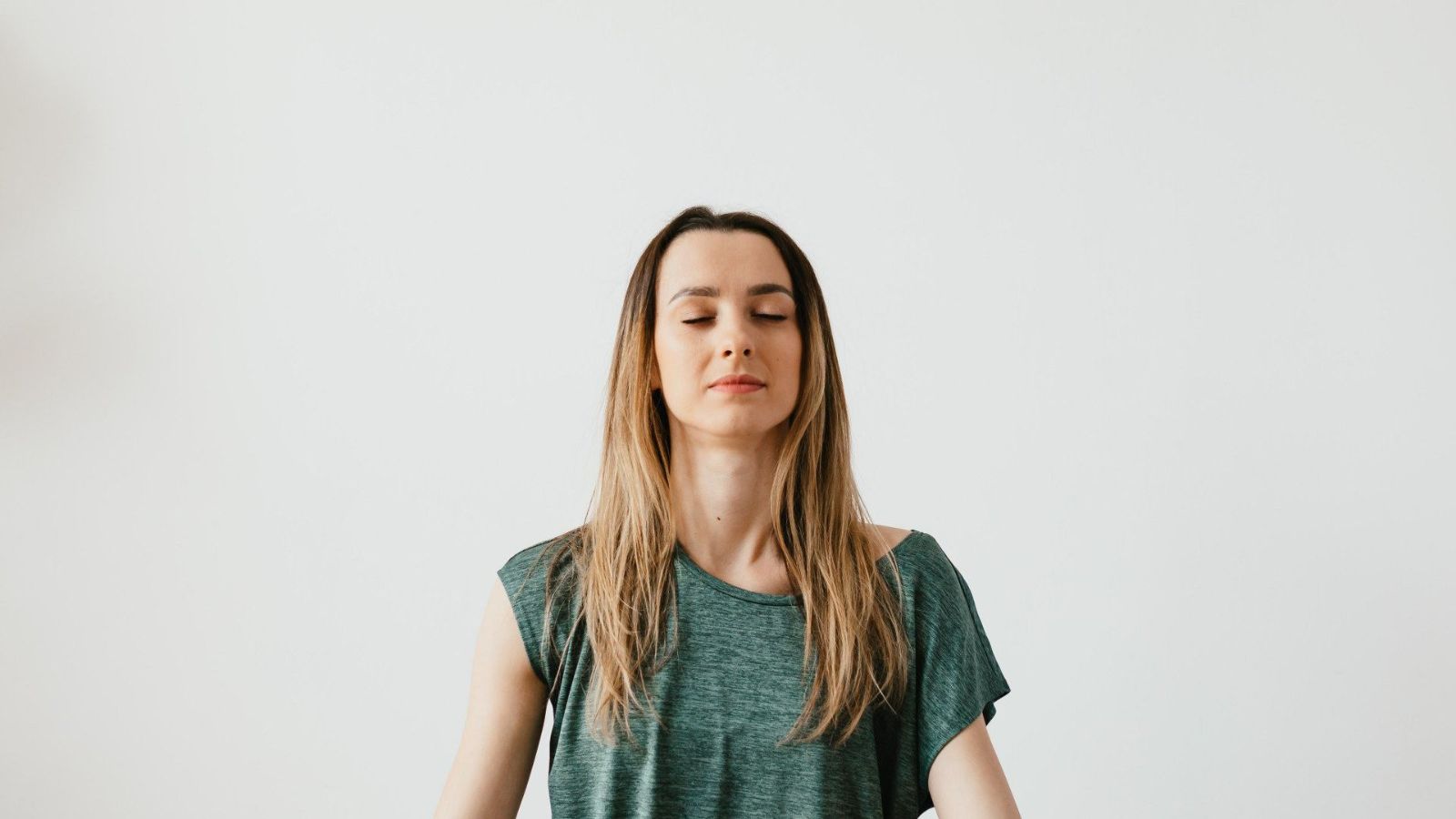
By Liz Campbell
•
May 21, 2024
As someone who has been practicing yoga for nearly twenty years and has taught thousands of classes, I've noticed that for many people, myself included, the most challenging part of yoga is quieting the mind. In asana, you may gain the physical strength and flexibility that allows your body to form into many interesting shapes, but your state of the mind and the ability to focus on the moment right now, is what determines the quality and effectiveness of your yoga experience. In other words, if you avoid the inner work and continue allowing your untamed mind to take over and distract you from being in the moment, you’re missing out on some of the important benefits that yoga has to offer. Some may argue that meditation and mindfulness are interchangeable terms, but they are not exactly the same thing. Mindfulness is simply practicing a present and nonjudgmental state of mind where you become hyper-aware of your thoughts, emotions, or experiences the moment they are happening. Meditation is a tool that is used to develop a regular practice of mindfulness. It’s possible to practice mindfulness without necessarily meditating, however, you can't practice meditation without mindfulness. Mindfulness can be practiced anywhere at any time of day, with eyes opened or closed, and the best part is that it won’t take very long for you to notice the positive effects. The Importance of Mindfulness In our fast-paced society, mindfulness is a relatively uncommon practice, and our minds stay unchecked as a result. After enough neglect, our mind can start behaving very similar to an untrained monkey, jumping from thought to thought, throwing metaphorical 💩 at you left and right. The craziest part is that we allow this monkey mind to influence our entire life. Anxiety, stress, worry, doubt, overthinking, and negative self-talk are just some of the daily mental problems that our monkey mind throws at us. At times, we can get so used to this kind of suffering, that it just becomes a regular part of every-day life. Those who want a quick fix turn to pharmaceuticals to mask these problems, but prescription drugs unfortunately do not actually address the root cause, making us addicted and dependent on them. The saddest part is that so many of us are not aware that by practicing mindfulness, we can begin to relieve ourselves of these mental conditions, and even prevent them from consuming our minds to begin with. Rewiring Your Mind Every time we allow the monkey in our mind to dictate our every thought, word, and action, we unknowingly give it more control. When this cycle is repeated, the monkey continues to grow stronger. If this is something you can relate to, there is good news; it just takes a little bit of mindfulness to start rewiring your mind and help you feel much more at peace. As you start to practice mindfulness more often, it will naturally begin to feel easier and more like second nature. With time, you will begin to feel its positive effects ripple out into all of the intricate details of your life. You may notice how each experience starts to feel richer, juicier, happier, and as though more and more blessings are entering your life. To get you started, here is a list of simple mindfulness rituals for you to practice daily, or as many days in a row as you can. 😉 Morning Stillness Instead of hitting the ground running first thing in the morning, try starting off your day with a few moments of stillness. Before getting out of bed, take deep breaths, notice the sensations in your body, and set an intention for the day. This simple practice may be a quick one, but it can really help ground you and set a positive tone for the day ahead. Mindful Eating Whenever you eat food, try to pay more attention to the taste, texture, and smell of each bite. Chew slowly, savoring each mouthful, and appreciate the nourishment your food provides. Mindful eating can enhance your enjoyment and greatly improve your digestion. Daily Gratitude Take a few quick minutes every day to write down things you appreciate. This can shift your focus from being negative to positive and help you attract more abundance in so many different areas of your life. Just a little gratitude journaling can really boost your mood and overall well-being. Body Scan At moments throughout the day, try scanning your body from head to toe, and notice any areas of tension or discomfort. Breathe a little more into these areas and practice letting go of any tension you may be holding onto. This kind of body scan can help you become more aware of your physical state and reduce a ton of stress. Walking Meditation Instead of rushing from one place to another, practice walking mindfully. Pay attention to the sensation of your feet touching the ground, and notice the sights and sounds around you. Mindful walking can turn everyday movements into opportunities for mindfulness and presence. Daily Self Compassion When you're feeling stressed or overwhelmed, pause and acknowledge your feelings with kindness. Repeat phrases like "May I be kind to myself" or "May I give myself the compassion I need." Self-compassion can soften your stress response and promote emotional healing. Unplug Often Take regular breaks from screens and technology. Use this time to reconnect with yourself, engage in hobbies, or spend quality time with loved ones. Disconnecting from screens can not only improve your mental clarity, it helps strengthen your relationships, too. Focused Breathing Throughout the day, take moments to focus on your breath. Notice the sensation of your inhale expanding your belly and chest. Notice your exhale lengthening until your lungs are empty. Try doing 5, 10, or 15 deep conscious breaths in a row. Conscious breathing does a fantastic job at calming your mind and bringing you into the present moment. Loving-Kindness Prayer Practice sending love and well-wishes to yourself and others. Repeat phrases like "May I be happy, may I be healthy, may I be safe, may I live with ease." Loving-kindness meditation can create a sense of connection and emotional warmth. Reflective Ending Before bed, reflect on your day with compassion. Acknowledge any challenges you faced without judgment, celebrate your accomplishments, and set intentions for tomorrow. Ending your day with reflection can enhance your self-awareness and prepare you for a restful sleep, which will help you begin a new cycle of mindfulness and ease into the following morning. Small Steps to Mindfulness As you move through your day more consciously, remember it’s not about being perfect. You don’t need to sit in long meditations daily to feel the benefits, starting small is key. Like I mentioned earlier, gradually incorporating these little mindful practices into your day makes them more subconscious so that soon, the countless benefits will become noticeable. You will feel calmer. Your breath will be slower. Your mind will begin to quiet down. And you will begin to feel more like your natural self. Allow each day to be different and give yourself grace as you work toward positive change. With love and deep belly breaths, Liz
Reward yourself and your email inbox!
Subscribe to my wellness blog to receive weekly educational articles, delicious and nutritious recipes, and more!


